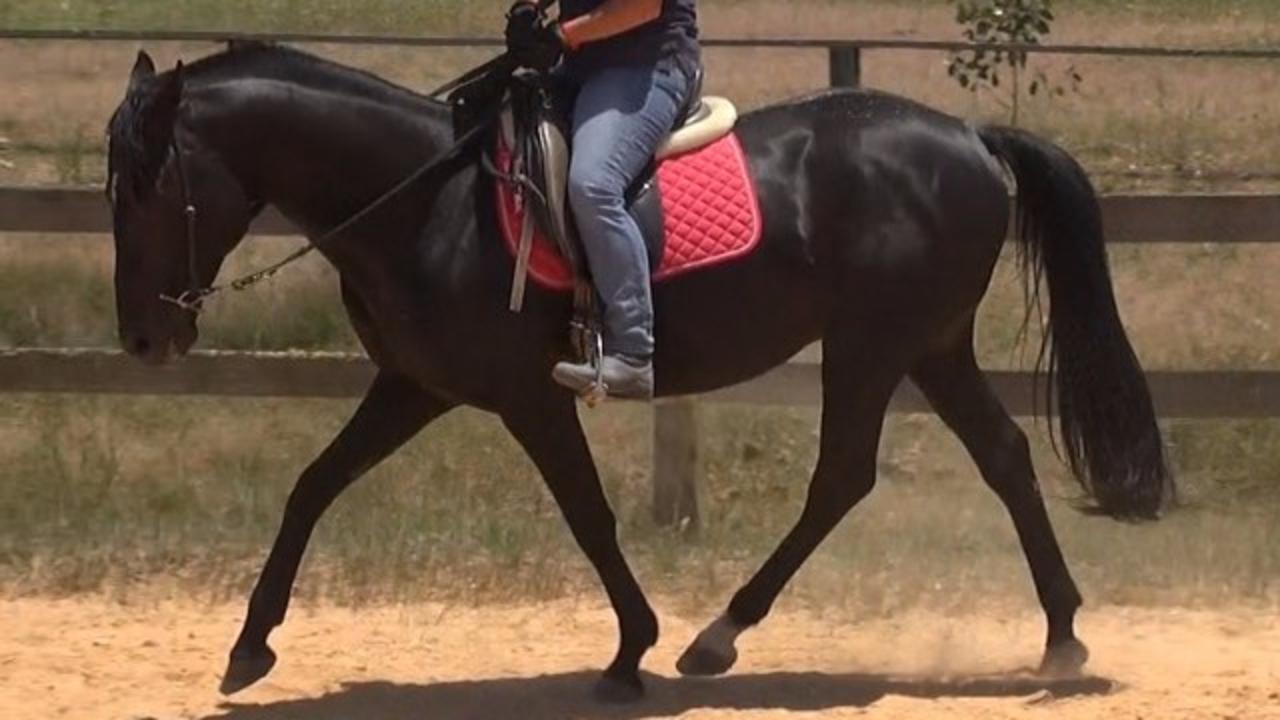
A common question I get asked is about how to learn the sitting trot. Riders tell me that they're alright for a few strides and then seem to lose it.
I think the problem stems from a lack of relaxation, on both the horse and the rider.
The horse:
Once the horse understands 'give to the bit', softness in the bridle and travel in frame, he can then elevate his shoulders and round his back. This will make the trot much more comfortable to sit, when the horse is using its back properly.
Next, there is the question of speed. As riders, we are often told to keep the young horse in a 'good working trot'. The problem is that is very energy expensive for the horse to do and your horse will likely not want to continue that pace for any length of time. Making the pace difficult for the horse, before relaxation, softness and frame are established as automatic responses, will keep the horse's attention focused on that, the pace. The horse will not be able to relax and thus will not be able to use its back properly to make a comfortable ride for you.
We know the horse can trot, we see him in the paddock with a terrific working trot - so let's teach one thing at a time and start with relaxation then move on to give to the bit. Your horse will thank you for it. Once those things are established as automatic, meaning when you pick up the reins to go the horse is relaxed, in frame, soft in the bridle and waiting for your next cue, then you can 'make it pretty' and pick up speed within gait.
The rider:
Your job will be much easier once you've got the horse to relax because it will be more comfortable however you can also add transitions to help you.
Do you find that your sitting trot is great for a 1/4 of a circle and then you start to bounce? This is often the case because we get tense, tense the muscles in our thighs and this throws us out of the saddle.
It's important that we relax too so don't ask so much of yourself - just decide to ride a short sitting trot and then a lovely transition back to walk. Start with a 1/4 circle and then work your way up.
Remember, it's really important to cue the horse back to walk and up to trot again and it makes a wonderful exercise to really improve your transitions if you do so. You must decide exactly where you are going to make the transition and do it there. Let's say you planned to go from trot to walk at A. You might use your verbal 'walk' cue 2m before A and then put your weight slightly back 1m before A and put pressure on the reins at A. As soon as the horse walks, release the pressure (or perhaps you've been practicing this and your horse walked when he heard the verbal cue, go you!!).
Keep it simple, keep it fun and build on that.
Don't forget to sign up here if you'd like this series delivered directly to your inbox.

